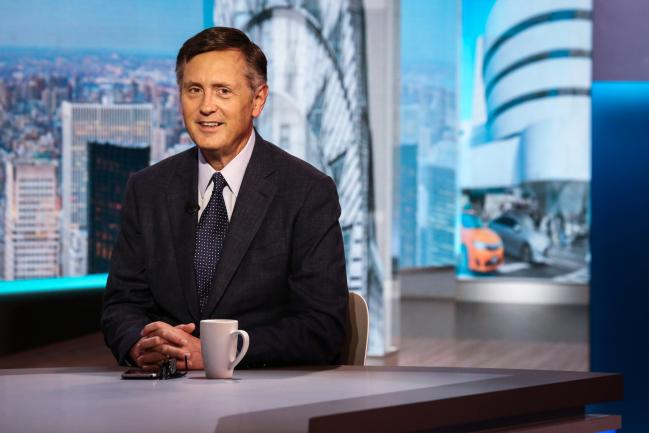(Bloomberg View) -- In the first 15 months of his presidency, Donald Trump has made some highly questionable economic moves -- a large and complex tax cut, tariffs that seem guaranteed to hurt important U.S. industries and the opening salvos of a trade war with China. But in terms of Federal Reserve appointees, Trump has so far been doing a solid job.
Trump’s decision to replace Janet Yellen as head of the Fed was an unnecessary move -- Yellen had been doing a great job, and the change was probably just an attempt to erase former President Barack Obama’s legacy. But Trump’s replacement, Jerome Powell, is as good a pick as could be hoped for. Powell is a steady hand who seems unlikely to veer into hawkish territory, and his decision to maintain closer contact with the Fed’s academic economists is an unexpected but good one.
Some observers, me included, had expected -- and feared -- that Trump would instead nominate economist John Taylor to the top Fed spot. In addition to being a generally hawkish figure, Taylor is wedded to a monetary policy rule that bears his name. That rule, which places a strong emphasis on preventing inflation and less weight on stimulating the economy, would have raised interest rates much earlier after the 2008 crisis, thus threatening the fragile recovery. Here are former Fed Chairman Ben Bernanke’s estimates of what the original Taylor rule would have recommended, contrasted with his own less hawkish preference:
Wisely, Powell is eschewing this hawkish route and is choosing to raise rates only cautiously.
Now, Trump has made another good choice, announcing his intention to nominate economist Richard Clarida for Fed vice chairman. Clarida, who has recently been working at investment firm Pacific Investment Management Co., or Pimco, is also a venerable and respected monetary economist. His work shows why the Fed’s current cautious approach is justified.
As a macroeconomist, Clarida worked on a set of ideas now known as New Keynesian economics. In the 1980s, the idea that central banks could stabilize the real economy had lost some of its sway within the halls of academia -- instead, many believed that preventing inflation should be the only goal. The New Keynesians reversed this in the 1990s, creating models that justified central bank intervention to revive moribund economies.
In 1999, along with Jordi Gali and Mark Gertler, Clarida wrote a lucid, readable article in the Journal of Economic Literature explaining the emerging New Keynesian paradigm. In 2002, the trio extended New Keynesian models to an international setting, tackling the often-ignored question of how central banks in different countries should interact.
The New Keynesians wanted central banks to keep a role for recession-fighting without sacrificing their vigilance against inflation. Clarida, Gali and Gertler called this “soft-hearted” inflation targeting. In a famous 2000 paper, the three economists estimated how the Fed had responded to inflation and recessions in the periods before and after the appointment of Chairman Paul Volcker in 1979. Assuming that the Fed followed a Taylor-type rule, they found that Volcker’s ascendancy brought an increased emphasis on inflation-fighting -- which made sense given the high inflation levels of the late 1970s and early 1980s.
Slowly, New Keynesianism won the intellectual battle, and became the dominant school of thought in academic macroeconomics. But even though it was now widely recognized that the Fed and other central banks boost the economy, there remained the crucial question of how much weight they should give to that task, versus fighting inflation. In their New Keynesian manifesto, Clarida, Gali and Gertler estimated that the Fed under Volcker and his successor Alan Greenspan placed substantially more emphasis on economic stimulus than Taylor’s original rule would recommend.
Assuming (as many do) that Volcker and Greenspan did a good job keeping inflation under control while boosting the real economy, this means that Clarida helped to show that the original Taylor rule is too hawkish, and that a more dovish modification is optimal. Bernanke agrees
-- his own version of the rule, pictured in the graph above, put a weighting on economic growth that is similar to Clarica, Gali and Gertler's estimate of what Volcker and Greenspan used.
But that leaves the question of whether Volcker and Greenspan really did such a good job. Although widely praised for keeping inflation low while allowing strong economic growth to proceed during the 1990s, Greenspan has been criticized by some for ignoring the rise of asset bubbles. After the financial crisis of 2008 and the Great Recession that followed, macroeconomists scrambled to add the role of the financial industry to their models. They have also been working to deal with the problem of the zero lower bound -- the fact that nominal interest rates can’t go much below zero, limiting the Fed’s ability to stimulate the economy during a long or deep recession.
Clarida hasn't ignored either of those crucial issues. In a 2010 essay, he argued that the Fed’s failure before 2008 wasn’t bad monetary policy, but lax regulation of the financial industry. And he praised the Fed’s decision to use unconventional monetary policies like quantitative easing, in addition to forward guidance about future changes in interest rates, after hitting the zero lower bound.
All of this suggests that Clarida’s approach to monetary policy will be very similar to that of Bernanke, Yellen, Powell and other recent Fed officials. He won’t take a hawkish turn or ignore the Fed’s mandate to support growth, but he won’t forget the threat of inflation either. In other words, like Powell, Clarida represents continuity, and a steady hand at the wheel.
This column does not necessarily reflect the opinion of the editorial board or Bloomberg LP and its owners.
